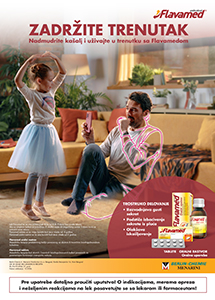HEALTH STATUS AND LIFE SATISFACTION OF SELF-ASSESSMENT OF STUDENTS AT THE UNIVERSITY OF NIS (WITH A FOCUS ON DIFFERENT FIELDS OF STUDY, PHYSICAL ACTIVITY AND GENDER DIFFERENCES)
Keywords:
self assesment, students, health status, health-related lifestyle habitsAbstract
The Aim: The authors aimed to examine and analyze the self-assessed mental and somatic health status, life satisfaction and level of physical activity of students at the University of Nis, according to the function of different study programs (fields of study) and gender.
Material and methods: The research was conducted on a sample of 172 respondents, 94 female and 78 male ones, aged 19 to 23. The interviewed students attended undergraduate studies in the winter semester of the academic year 2018/2019, at the Technical Faculties and the Faculty of Sports and Physical Education, University of Nis. The information was collected by filling out a modified form of the Sportello Salute Giovanni questionnaire which contained questions that examined the following domains in the student population: self-perception of psychological and physical health, life satisfaction, level of physical activity and frequency of health-related lifestyle habits such as smoking and alcohol consumption.
Results: The results show a statistical difference between the examined parameters of self-assessed health by gender, weekly frequency of physical activity and an alarmingly low percentage of non-smoking students. The students of the Faculty of Sports and Physical Education have a generally high level of life satisfaction and self-assessed health status compared to students of Technical Faculties, which certainly singles out and impacts physical activity as one of the important factors in preserving and improving health. The results showing respondents’ life satisfaction indicate that female population has significantly better values of self-assessed health, being also more satisfied with life compared to male population.
Conclusion: Schools and colleges are the most suitable locations and provide an opportunity to promote a healthy lifestyle, with physical education classes as a principal element in promoting healthy behaviours.
References
World Health Organization. Health promotion glossary. World Health Organization; 1998.
Waure CD, Soffiani V, Virdis A, Poscia A, Pietro MLD. Italian university students' self-perceived health and satisfaction of life. Annali dell'Istituto Superiore di Sanità 2015; 51: 121-125. doi: 10.4415/ANN_15_02_09
Haseen F, Adhikari R, Soonthorndhada K. Self-assessed health among Thai elderly. BMC geriatrics 2010; 10(1): 30-39. doi.org/10.1186/1471-2318-10-30
Cheah YK. An exploratory study on self-rated health status: The case of Penang, Malaysia. Malaysian Journal of Economic Studies 2017; 49(2): 141-155.
Bjelaković Lj, Ranđelović L, Živković M, Antić V, S. Pantelić (Ed.) Self-perceived health status, health-related lifestyle habits and life satisfaction among students of FSPE (with the focus on the year of styding and gender difference). In S. Pantelić (Ed.), Book of Proceedings of the XX Scientific Conference “FIS COMMUNICATIONS 2017” in physical education, sport and recreation, 2017 October, 19-21; Niš: Fakultet sporta i fizičkog vaspitanja.
Buckworth J, Granello D, Belmore J. Incorporating Personality Assessment into Counseling to Help College Students Adopt and Maintain Exercise Behaviors. J Coll Couns 2002; 5(1): 15-25. doi.org/10.1002/j.2161-18822002.tb00203.x
Wallace LS, Buckworth J, Kirby T, Sherman WM. Characteristics of Exercise Behavior among College Students: Aplication of Social Cognitive Theory to Predicting Stage of Change. Prev Med 2000; 31: 494-505. doi.org/10.1006/pmed.2000.0736.
Fučkar Reichel K., Špehar, N., Gošnik, J. The health condition of the first-year students of the University of Zagreb In: M. Kovač, G. Jurak & G. Starc (Eds.), Book of Abstracts, 5th International Congress Youth Sport 2010, 102, Ljubljana: University of Sport, ISBN 978-961-6843-03-4.
Lindsey BJ, Saunders CM, Ochs L. Gender similarities and differences in college students' health interests. American Journal of Health Studies 2008; 23(1), 27-34.
Coput Jogunica R, Čurković S. (2007.) Physical activity index and fitness self-assessment of students at the Faculty of Agriculture, University of Zagreb. U: M. Andrijašević (ed.), Proceedings of “Sports for all in the functionof improving the quality of life”,, Zagreb: Faculty of Kinesiology, University of Zagreb, 2007; 319 – 326.
Harrington J, Perry IJ, Lutomski J, Fitzgerald AP, Shiely F, McGee H, Barry M. M, Lente EV, Morgan K, Shelley E. Living longer and feeling better: healthy lifestyle, self-rated health, obesity and depression in Ireland. Eur J Public Health 2010; 20(1): 91-95. doi.org/10.1093/eurpub/ckp102
Bond J, Dickinson HO, Matthews F, Jagger C, Brayne C, & CFAS M. Self-rated health status as a predictor of death, functional and cognitive impairment: a longitudinal study. Eur J Ageing 2006; 3(4): 193-206. doi.org/10.1007/s10433-006-0039-8
DeSalvo KB, Fan VS, McDonell MB, Fihn SD. Predicting mortality and Health care utilization with a single question. Health Serv Res 2005; 40(4): 1234-1246.doi.org/10.1111/j.1475-6773.2005.00404.
Asztalos M, De Bourdeaudhuij I, Cardon, G. The relationship between physical activity and mental health varies across activity intensity levels and dimensions of mental health among women and men. Public Health Nutrition 2002; 13(8):1207-1214. doi.org/10.1017/S1368980009992825
Södergren M, Sundquist J, Johansson SE, Sundquist K. Physical activity, exercise and self-rated health: a population-based study from Sweden. BMC Public Health 2008; 8(1): 352-361. doi:10.1186/1471-2458-8-352
Tsai J, Ford ES, Li C, Zhao G, Pearson WS, & Balluz LS. Multiple healthy behaviors and optimal self-rated health: findings from the 2007 Behavioral Risk Factor Surveillance System Survey. Prev Med. 2010; 51(3-4): 268-274. doi.org/10.1016/j.ypmed.2010.07.010
Grossman A. Endorphins:" opiates for the masses". Med Sci Sports Exerc 1985; 17(1): 101-105.
Harber VJ, Sutton JR. Endorphins and exercise. Sports Med. 1984; 1(2), 154-171. doi.org/10.2165/00007256-198401020-00004





